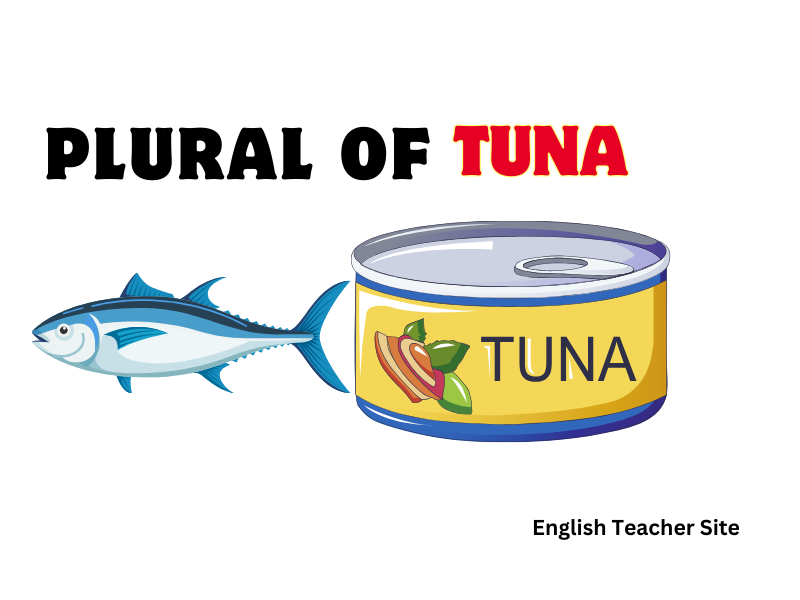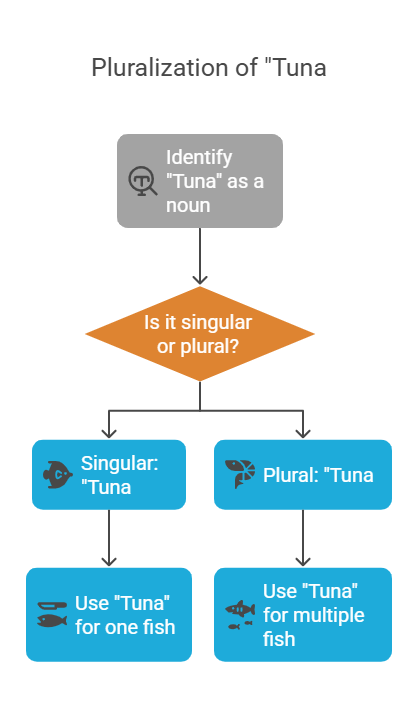The Surprising Truth About the Plural of Tuna

Introduction: Unveiling the Mystery Behind the Plural of Tuna
The plural of “tuna” is a source of confusion for many, despite its widespread use in everyday language. This confusion arises from the fact that it doesn’t follow the typical rule of adding “-s” or “-es” to form plurals, as in “cats” or “buses.” For many English learners and even native speakers, this irregularity can be perplexing. In most cases, we expect a simple transformation to signify pluralization, but “tuna” remains the same in both its singular and plural forms. The result? People often make the mistake of using “tunas” instead of recognizing that “tuna” works as both singular and plural.
The Plural of Tuna: Debunking Common Misconceptions
Why Many People Think the Plural of Tuna is Tunas
One of the most common misconceptions regarding the word “tuna” is the assumption that its plural form is “tunas.” This error likely arises from the same linguistic patterns that govern most English nouns, where the addition of “-s” is the standard method of pluralization.
The Reality: Why Tuna Doesn’t Follow the Usual Plural Rules
Unlike regular English nouns, “tuna” falls into a special category of words that do not require any modification when pluralized. It retains the same form, much like other words borrowed from foreign languages. The irregularity stems from the influence of languages like Spanish and Arabic, which did not employ the “-s” plural form for tuna. Over time, as the word became established in English, its unique pluralization persisted. This has led to its current status as an exception to the general rule, maintaining a singular/plural distinction without the need for any additional markers.
The Unchanging Nature of Tuna: Singular and Plural in One Form
In essence, “tuna” operates as both the singular and plural form of the word. This means that whether one refers to a single fish or multiple fish, “tuna” remains the same. For example, “I caught a tuna” and “We caught three tuna” both use the same word, and the meaning is clear from context rather than grammatical alteration. This dual use simplifies communication and further entrenches the word’s place in the English language, despite its irregularity.
The Linguistic Logic Behind Keeping Tuna in Its Singular Form
The decision to keep “tuna” as both singular and plural may seem puzzling at first, but it is a reflection of the historical and linguistic trajectory of English. Words like “tuna” were adopted from other languages where plurals were formed differently or were simply left unchanged. By retaining the singular form for the plural as well, English avoided the cumbersome addition of “-s” to an already established and widely accepted term. This practicality and simplicity in usage contributed to the word’s continued success in the language.

Real-World Usage: How the Plural of Tuna is Used in Everyday Language
Common Phrases Featuring the Word Tuna
The word “tuna” frequently appears in everyday language, particularly in contexts related to food and fishing. Whether discussing a meal (“I’ll have a tuna sandwich”) or an ocean expedition (“We saw tuna in the deep blue sea”), the singular and plural forms remain consistent. Its application spans casual conversations, culinary discussions, and even scientific contexts, further cementing its place in the lexicon without the need for a plural modification.
Is “Tuna” Used in Its Singular or Plural Form in Different Contexts?
Context plays a pivotal role in determining whether “tuna” refers to one fish or many. In both cases, the word remains the same, and the number of fish is clarified by the context or additional descriptive words. For example, “We caught a tuna” indicates a single fish, while “We caught several tuna” implies more than one. The meaning is clear without needing a different word for the plural form.
The Difference Between Tuna as a Species and Tuna as a Food
When we refer to “tuna” as a species, we are typically talking about the fish in its biological context. However, when “tuna” is mentioned as food, it often refers to a product, such as canned tuna. In both cases, the singular and plural forms remain unchanged, but the specific context—whether discussing the animal or the food—helps clarify the meaning.
Global Perspectives: How Different Languages Handle Tuna’s Plural
While “tuna” remains singular and plural in English, other languages may follow different rules for pluralization. In Spanish, for instance, the plural is “atunes,” and in Arabic, it could be something else entirely. These variations highlight the diverse ways in which languages handle nouns borrowed from other tongues, but the consistency of “tuna” in English serves as a reminder of the complexities inherent in language evolution.
Conclusion: Embrace the Unusual—The Singular and Plural of Tuna
The plural of “tuna” is one of the more fascinating quirks of the English language. It defies the standard pluralization rules, remaining the same in both singular and plural forms. Understanding the historical and linguistic influences behind this phenomenon adds depth to our appreciation of the word.
Why Mastering Words Like Tuna Can Enhance Your Language Skills
Mastering words with irregular plurals like “tuna” not only improves one’s command of the language but also deepens one’s understanding of the rich history and evolution of English. These words remind us that language is living, constantly evolving, and full of surprises.
Sources
My name is Khamis Maiouf. I am the creator of the English Teacher Site, dedicated to providing valuable resources and insights for students around the world. With a passion for education and a commitment to helping students enhance their skills, I aim to make English teaching more effective and enjoyable for both educators and students.






